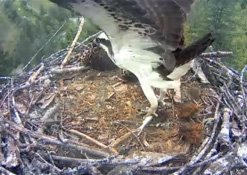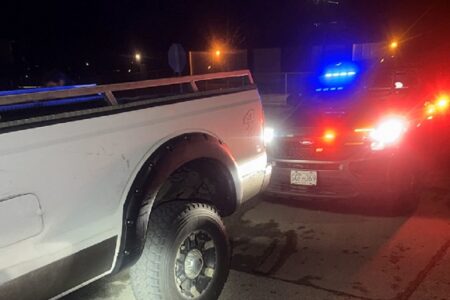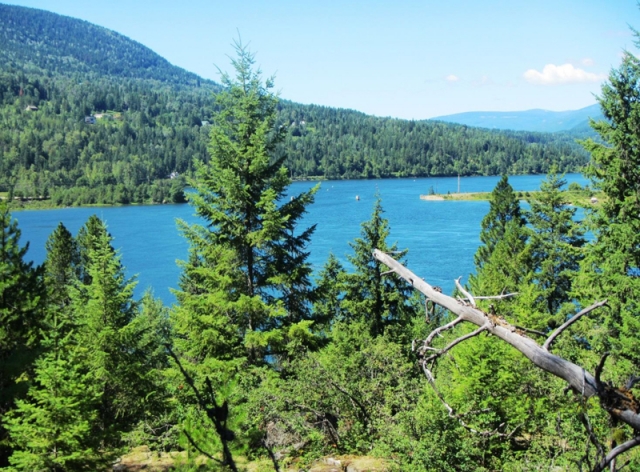Osprey cam offers fascinating glimpse into raptor life
The osprey chicks have left the nest and the live-streaming osprey cam, jointly operated by the Fish & Wildlife Compensation Program (FWCP) and the Creston Valley Wildlife Management Area, has been switched off. Two of the three chicks fledged successfully and this particular osprey family will be soon head south for winter.
The camera, located near Creston, provided a close look at day-to-day life in an osprey nest: the shrieking of the young as the adult male came into close range to deliver fish; the female feeding her young; and how she would mantle her wings to protect them from the elements.
“Despite some technical glitches, we were happy with the way the osprey cam worked this year, and extremely pleased that the adults were able to successfully raise a pair of young – especially after last year when both eggs were taken from the nest by predators,” said FWCP senior wildlife biologist John Krebs from BC Hydro.
The FWCP works on behalf of its program partners BC Hydro, Ministry of Environment and Fisheries & Oceans Canada to take proactive steps to protect fish and wildlife populations throughout B.C.
This year, the first of three chicks hatched in mid-June following a 35-40 day incubation period. One chick went missing on July 19, and the remaining two birds took their first flights in mid-August with both successfully leaving the nest by Aug. 23.
“We got lots of emails about the ospreys from various parts of the world,” added Krebs. “The majority of questions revolved around the missing chick, and the intermittent sneezing of the remaining chicks.”
While the camera was not streaming live when the chick went missing, a juvenile bald eagle is thought to be responsible for the predation as one was observed circling the nest about the same time of the disappearance. A thorough ground search around the nest site revealed no evidence of the chick falling, or having been pushed from the nest by its siblings.
Ospreys, like other raptors, can have respiratory ailments, and chicks may appear to be very congested with mucous. Both of these juveniles, however, appear to have grown well and left the nest successfully. “Another popular question we continue to receive is whether we intend to operate the osprey cam next year,” said Krebs. “The answer is yes – with the wonders of Mother Nature permitting of course!” Anyone wanting to bookmark the site for next year should go to www.fwcp.ca.
























Comments